Meet the volcano chaser documenting Indonesia’s volatile craters
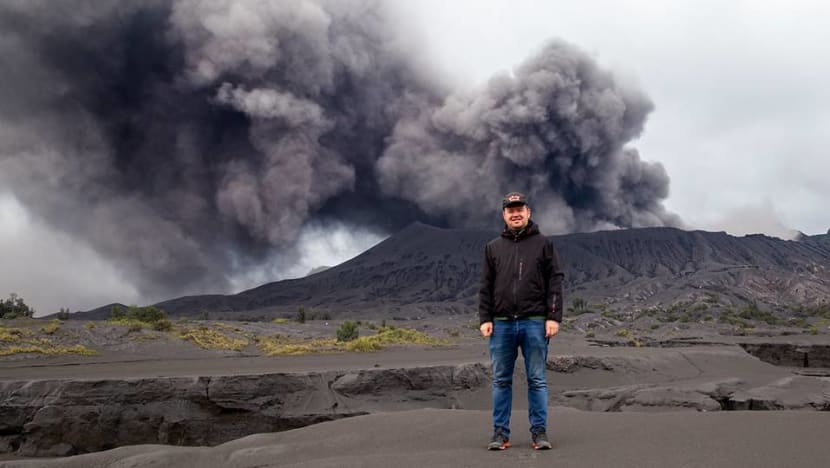
Photographer Øystein Lund Andersen posing in front of Mt Bromo in East Java, Indonesia in March 2019. (Photo: Øystein Lund Andersen)
JAKARTA: When Indonesia’s Mount Tangkuban Parahu erupted on Jul 26, thousands of visitors scrambled for their lives and fled as quickly as they could from the towering cloud of ash spewing out of its crater.
However, Mr Øystein Lund Andersen, a 37-year-old Norwegian photographer living in Jakarta, did the exact opposite. He immediately packed his gear and a few necessities, driving for four hours towards the volcano to be in the thick of the action.
“Volcanoes are very dynamic and the science, the stuff that happens inside them is really fascinating,” Mr Andersen told CNA of his passion in documenting volcanic eruptions and activities.
And there are plenty of mountains to choose from in Indonesia, an archipelago which straddles along the Pacific Ring of Fire and is home to more volcanoes than any other country in the world.
Of the 127 active volcanoes, 22 are seeing heightened activities and are currently put under the close watch by the Indonesian Volcanology and Geohazard Mitigation Centre. These include Mt Tangkuban Parahu, a popular tourist destination just north of Bandung, Indonesia’s fourth-largest city.
When there are no eruptions to capture, he focuses his work on photographing lesser-known volcanoes. Typically, no photographers have documented these volcanoes, while many locals have not even heard of them.
BRUSH WITH DEATH
Despite the nature of his work, Mr Andersen said he is not a risk-taker who ignores instructions and breaches restricted areas and exclusion zones.
“Not only can volcanoes be dangerous but as a guest living in Indonesia, I have to be aware of those restrictions. Also, you need a bit of distance to capture the action. If you want to get closer, you have drones,” he said.
This does not mean he never had any close calls.
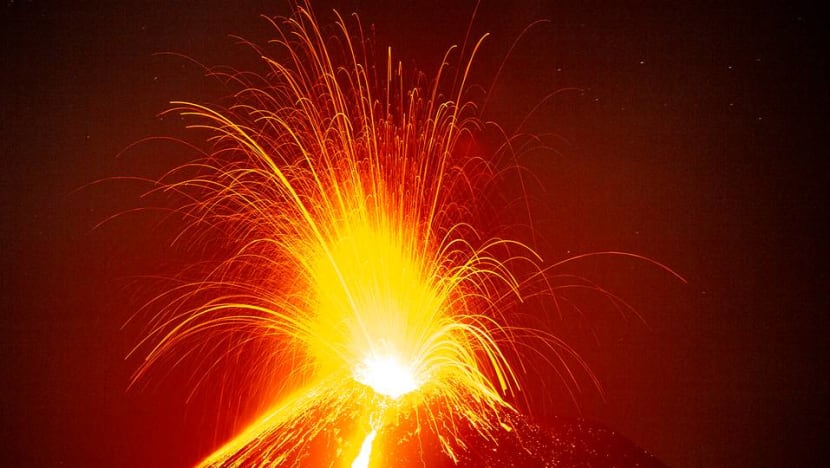
On the evening of Dec 22 last year, as he was about to take photos of an eruption on Mt Anak Krakatau, he and his family were almost swept away by the tsunami triggered by a massive underwater landslide.
“I was lining up my camera. Suddenly, I could see a huge wave coming in front of me. I just grabbed my camera and ran,” he recounted, adding that he could barely outrun the incoming wave before it stopped just metres away from him.
“I went back to my hotel. While I was standing there, the sound of the sea just disappeared. I knew that another wave was coming. I went up (to my room) to wake my child and wife up.
“Then while I was waking them up, I could feel the second wave as it was pounding the hotel. The hotel’s foundation was shaking. I looked out the window, the water had completely surrounded the hotel.”
Mr Andersen said as soon as the waters receded, he immediately ran up the hill together with his wife and his then three-year-old son, and spent the night as refugees.
Even after his brush with death, he remains dedicated to his profession and Mt Anak Krakatau (which means the “Child of Krakatoa"), which is located off the coast between Java and Sumatra, remains his favourite volcano.
“The first volcano I ever photographed was Anak Krakatau back in 2008. It was the reason why I fell in love with volcano. And I have been coming back dozens of times. So I have seen how it grows and changes,” he said.
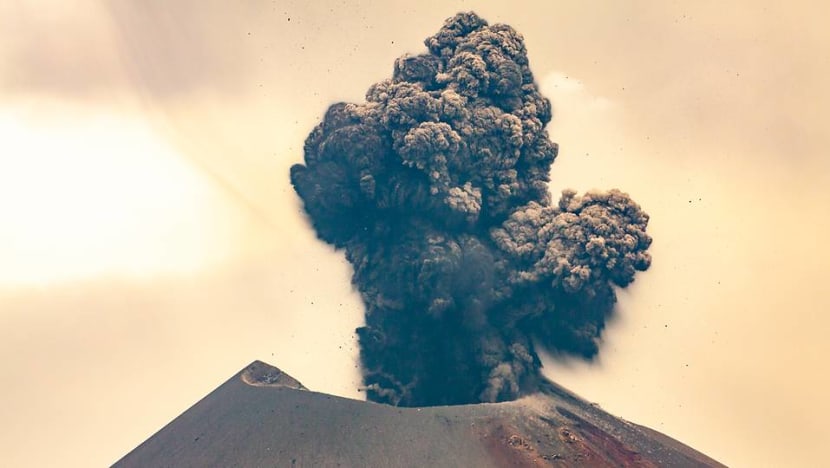
But no changes were more dramatic than what happened in 2018, when the volcano gradually ballooned in size due to increase volcanic activities which began in August that year, before losing a third of its height due to the landslide four months later.
ASPIRING ANTHROPOLOGIST TURNED VOLCANO CHASER
Growing up in the small city of Bodø, Norway, just north of the Arctic Circle, Mr Andersen had always been passionate about nature and photography.
His parents bought him his first camera when he was nine and he used it to photograph the woodlands and the mountains surrounding his city.
But he always dreamed of photographing isolated indigenous communities who still retained their traditional way of life for centuries, inspired by the books he read at the local public library.
“When I was 12 and I saw a map of this huge green island called New Guinea, which looks like a bird,” he said of the island which Indonesia and Papua New Guinea share.
“By chance I got into this student exchange programme in Bali 15 years ago. I remembered when I was younger I was fascinated by this island, so I went for a week's trip when I was 22. I was so fascinated I have to go back there,” he recalled.
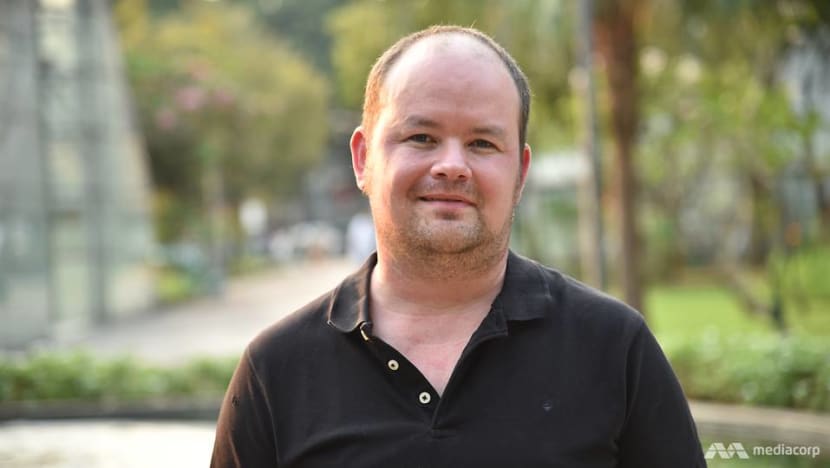
He decided to enrol into Cendrawasih University in Indonesia’s isolated and underdeveloped Papua and study anthropology.
“The university had no idea how to enrol a foreign student. Everybody was laughing. Why do you want to study at Cendrawasih while everybody (in Papua) wants to go out (and study elsewhere)?” he recounted.
He eventually got accepted and the experience allowed him to study remote tribal communities deep in the mountainous jungle of Papua.
“It was physically very difficult. You have to fly with a Cessna aeroplane and then you have to walk for about a week. I doubt that I could have done that today,” he said.
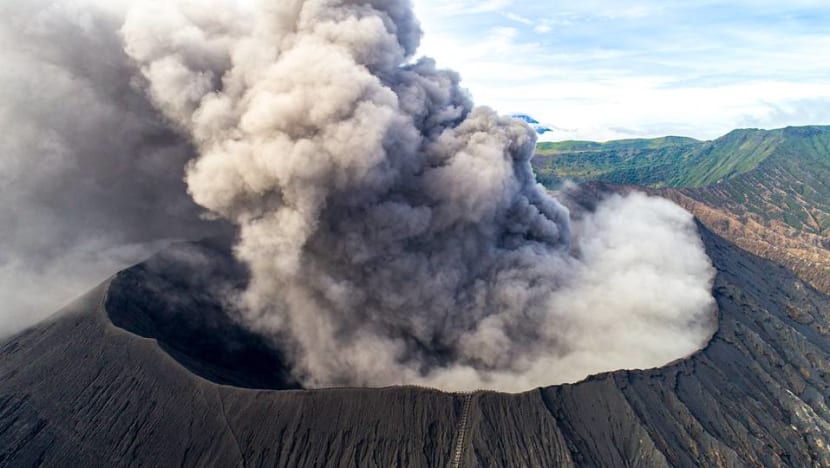
“You can get really good photos from volcanoes. I was hooked and I started to learn the science behind them,” he said.
Soon he was visiting volcanoes after volcanoes, mostly in Java and Sumatra, especially when they erupted.
THE CHASING CONTINUES
Even after 11 years of chasing volcanoes, Mr Andersen said he has only managed to photograph less than 40 of Indonesia’s 127 active volcanoes.
What sets him apart from the rest of the small pack of volcano photographers is his approach to his profession, he added.
His aim is to produce photographs which can be useful to scientists and authorities, instead of just dabbling with techniques and composition to take aesthetically pleasing shots.
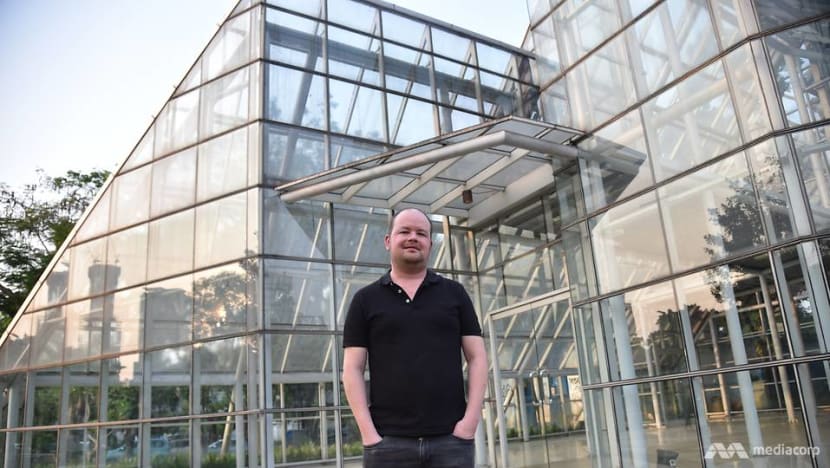
“Other photographers are interested in pure photography. They want something scenic. I am more interested in actions,” he said.
“I also write notes like ‘this happened on this mountain at this time’ so (scientists) can look at my observations and my photos and compare them to the data they gathered from seismographs and satellite images to determine what happened and learn more about the eruption.”
Mr Andersen also shares his observations on Twitter, making him the unofficial source of information on the ground when an eruption hits. His growing number of followers includes scientists, officials and journalists, among others.
Nonetheless, since weather is unpredictable in mountainous areas, his trips can sometimes turn futile.
“There are times when you don’t get any good shot because it was foggy, even after you stayed up there for a week. Sometimes you check the weather forecast and it’s bad and you decided not to go, but then in the morning the weather cleared up and you are left in regret for not going,” he said.
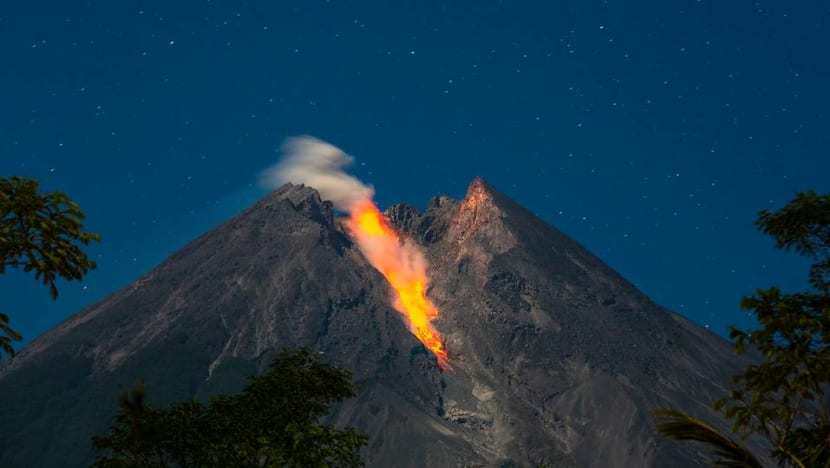
“You have to be really patient. That is key. You have to plan and you have to be lucky. That’s why you just have to go to the site over and over again. Because when you have that one shot, that feeling is really good.”












